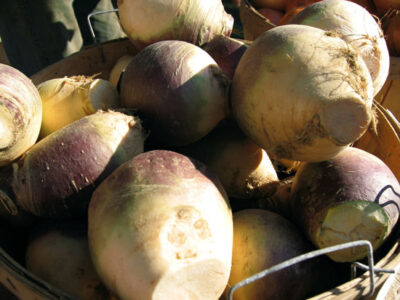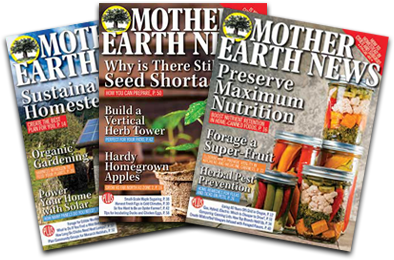
Discover how to make prepared horseradish for a spicy kick to your meals and for a winter wellness boost.
If you’ve ever grated fresh horseradish, you know it’ll wake you right up! This cold-tolerant root is effortless to grow, and you’ve probably encountered its spicy kick, which adds more than flavor to your meals. For centuries, people have used horseradish to breathe easier, break up stubborn mucus, and warm up on chilly days. I tend to get congested in winter and enjoy having this homemade medicinal condiment on hand.
Here’s a simple way to put horseradish to good use in your winter kitchen. This sauce is delicious with baked meats or roasted vegetables. I add a dollop to pesto, potato salad, and root-vegetable dishes for that extra burst of sinus-clearing medicine. Just so you know, it’s irresistible served with mashed potatoes!
Ingredients
- 1/2 cup sour cream
- 2 tablespoons heavy whipping cream
- 2 to 3 tablespoons finely grated fresh horseradish (adjust to taste)
- 1 minced garlic clove
- 1 teaspoon Dijon mustard
- 1 teaspoon white wine vinegar
- 1/4 teaspoon sea salt
- 1/4 teaspoon black pepper (freshly ground, for best flavor)
- 1 teaspoon fresh chives, parsley, rosemary, dill, or lemon zest, for garnish (optional)
Directions
- In a small bowl, combine sour cream, whipping cream, horseradish, garlic, and Dijon mustard.
- Stir in white wine vinegar.
- Add salt and pepper and adjust seasonings or horseradish for desired heat and flavor.
- Let sauce rest in the refrigerator for at least 30 minutes to allow the flavors to meld.
- Sprinkle with chosen garnish before serving, if desired.
Why Make Your Own?
- Many store-bought horseradish condiments come with a long list of preservatives you probably don’t want. By crafting your own, you can feel confident you’ve made a truly medicinal preparation.
- Fresh horseradish root is pungent, aromatic, and full of constituents that can help ease congestion and get digestion moving.
- You can experiment with the taste. Make it as mild or as fiery as you’d like. Stir in more cream to disperse the heat, or sprinkle in fresh parsley or thyme for variation in flavor.
- It’s also a smart way to use up homegrown horseradish or that big root you bought at the store. Once you see how easy it is to whip up a batch, you’ll never want to go back to the bottled options.
A Remarkable Root
For thousands of years, horseradish (Armoracia rusticana) has been used to add heat to meals and herbal formulas alike. It’s a hardy perennial native to Eastern Europe, but you can find it in gardens throughout the world. It has become a weed in my orchard in Northern California; every year, more plants just pop up. Horseradish is part of the Brassicaceae family (along with mustard and cabbage). It grows large, deep taproots with crisp, white flesh that’s pungent and hot. Harvesting usually happens in fall or early winter, when the root is strongest.
People have leaned on horseradish for ages to encourage digestion (especially with heavy, protein-rich meals) and to help get rid of excess congestion. That sinus-clearing spike you get when grating it fresh comes from powerful plant compounds called “glucosinolates.” These break down into isothiocyanates, which bring out the boldness and fight unwanted microbes.
Traditionally, fresh horseradish has been used in all kinds of ways: grated into vinegar for pickling, stirred into condiments for meat dishes, or mixed with honey for cough support. It’s also often blended into fire cider (a peppery vinegar tonic made with herbs and spices) to warm the body and open up the sinuses during frigid, damp months.
Spice Up Your Winter Table
A bit of horseradish can really liven up a dish. Feel free to play around: Toss in different fresh herbs from your garden to make it your own. Put it on sandwiches, mix it into goat cheese, put a dash in your salad dressing or hummus, or serve it with hearty meats. However you enjoy it, you’ll certainly feel that head-clearing heat in every bite.
Originally published in the December 2025/January 2026 issue of MOTHER EARTH NEWS magazine and regularly vetted for accuracy.









